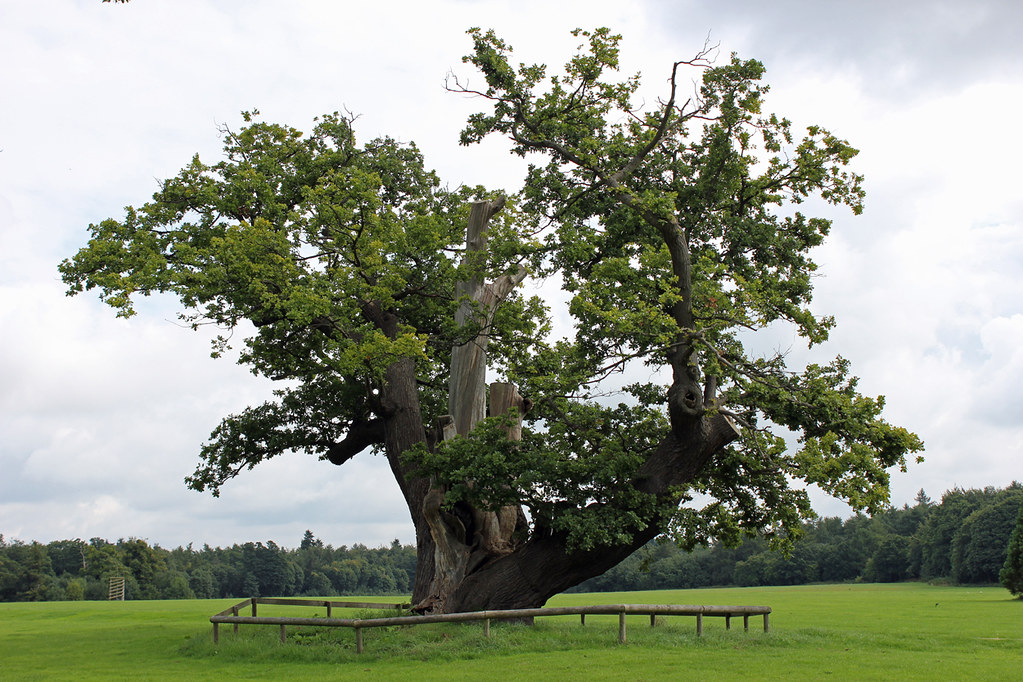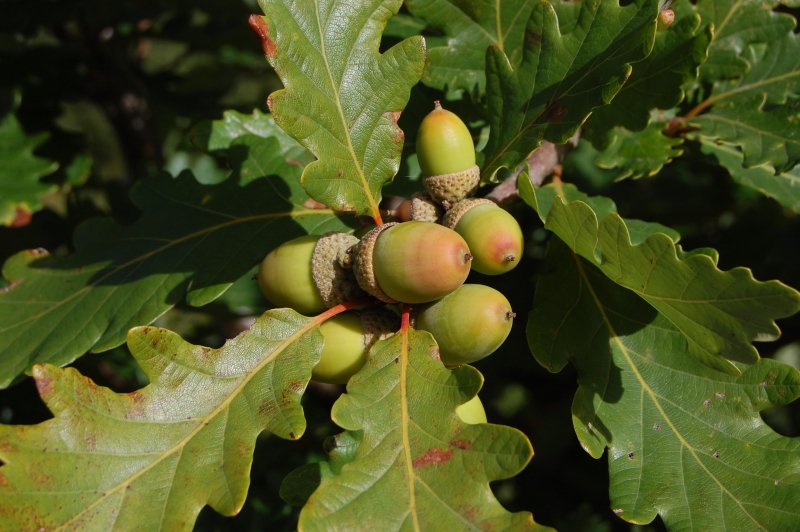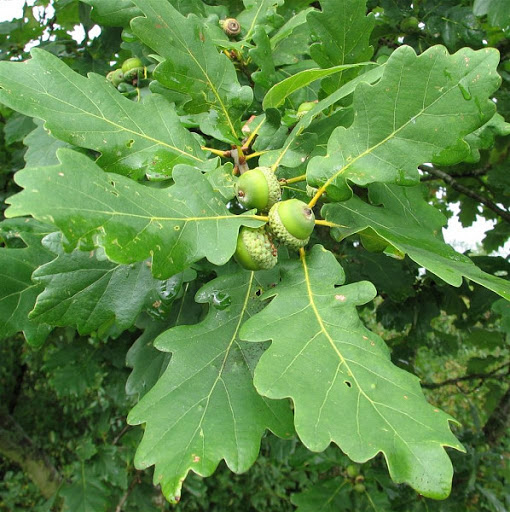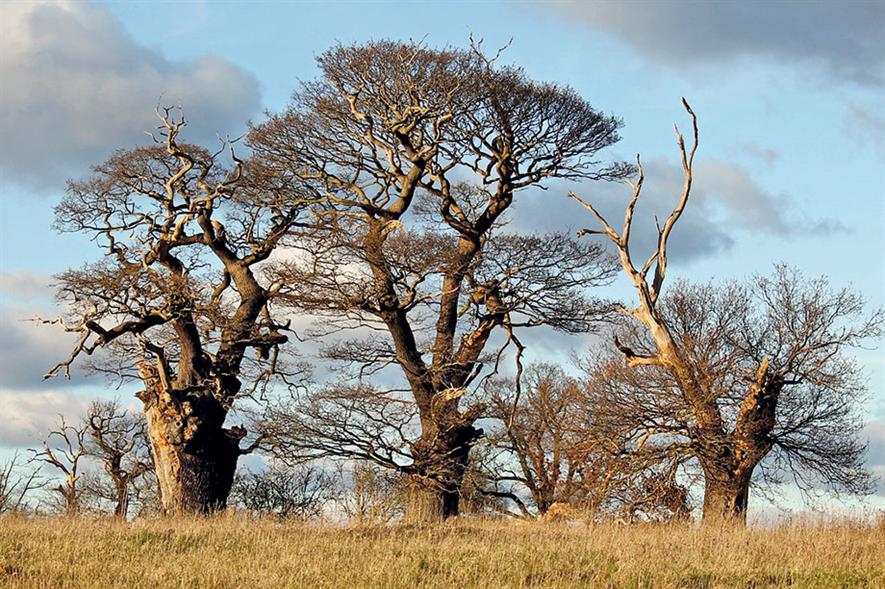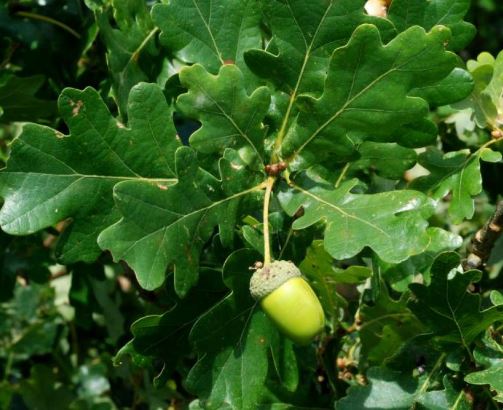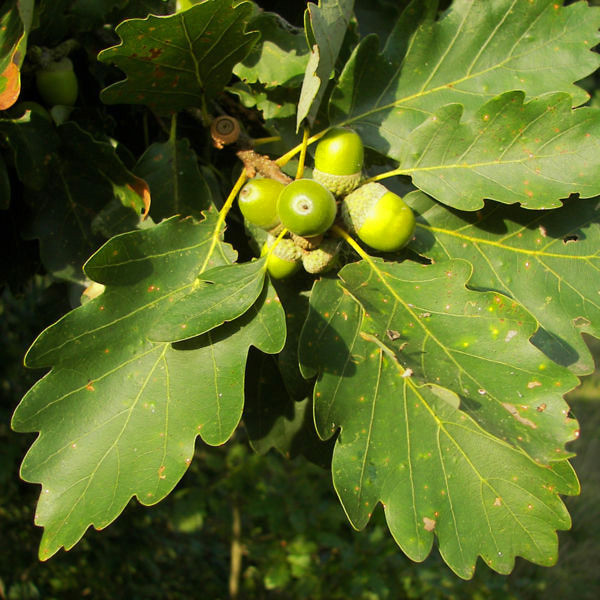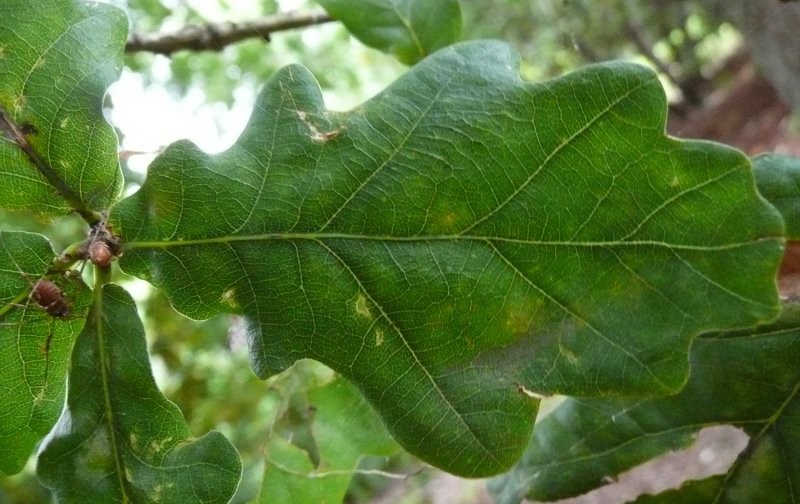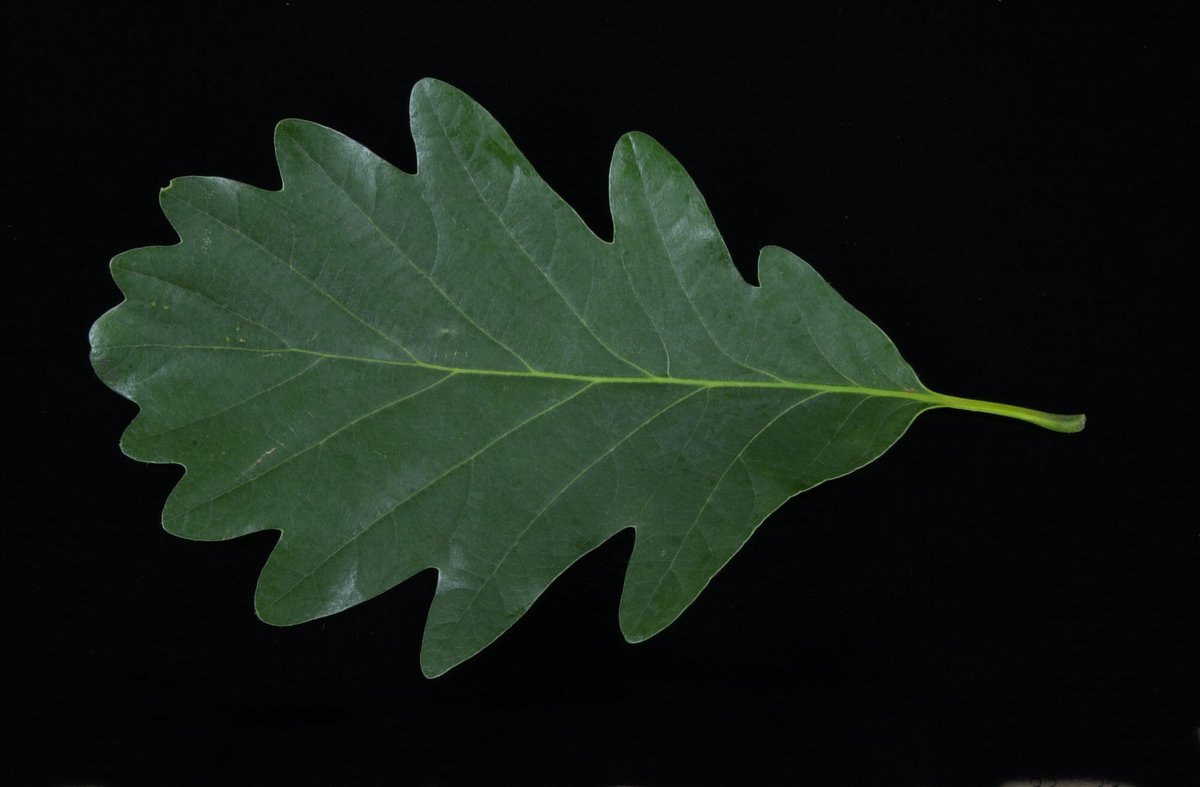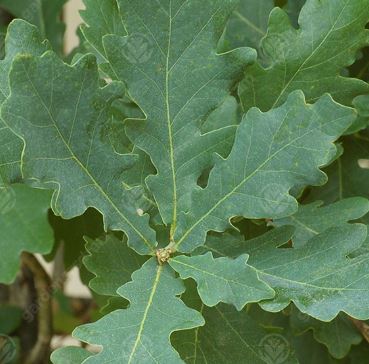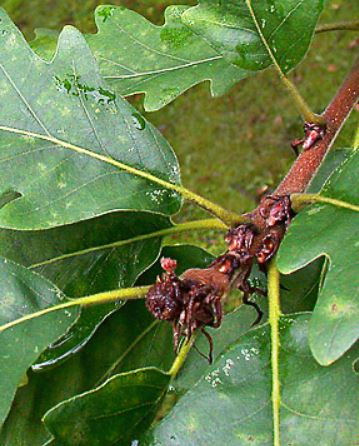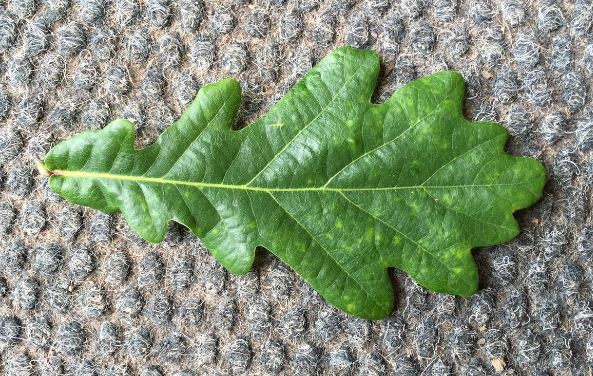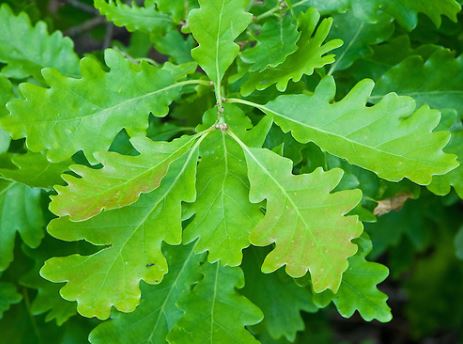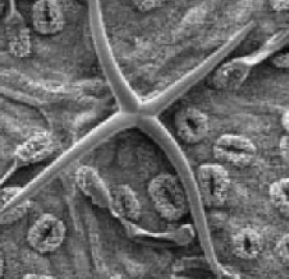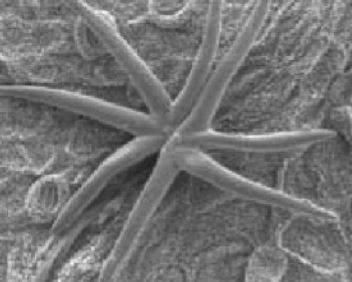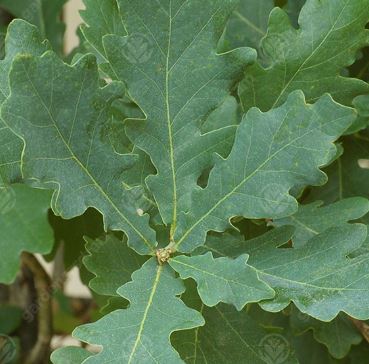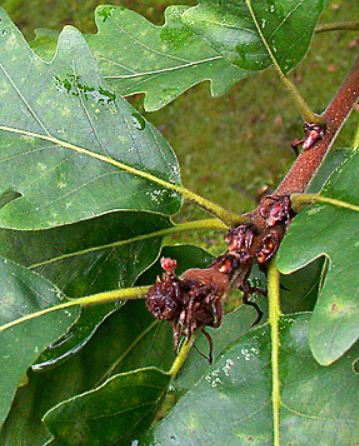Oaks are tricky. It is much easier to conclude “That’s not Quercus robur” than it is to say exactly what it IS you are looking at. In many places, the hybrid Quercus x rosacea is much more frequent than proper Q. petraea. This one is easy: it’s a proper Q. robur.
My old university teacher, John Cousens, spent his whole working life studying oaks in Scotland, He reluctantly concluded that most of the oaks he had measured were neither Q. robur nor Q. petraea.
It is a moot point whether plants that are intermediate in one or more characters are really hybrids, but it is pragmatic to record plants that are not ‘proper’ Q. robur or Q. petraea as Q. x rosacea for the time being.
In the following tweets I’ll illustrate the ‘proper’ features of the two species, but I don’t have good pictures to illustrate all of the degrees of intermediate for every character.
First is the feature that gave the plants their old-fashioned familiar names: Pedunculate Oak (Quercus robur) and Sessile Oak (Q. petraea). The acorns are held on long stalks (peduncles 2-9cm) in the first case, and on short ones (<2cm, or none = sessile) in the latter.
The jizz of the leaves differs most obviously in their lobes. Quercus robur has few lobes (typically 4) and Q. petraea has many (typically 6). The problem is that lobe number is equivocal, because the ranges overlap (3-6 pairs in Q. robur and 5-8 pairs in Q. petraea).
A really good distinguishing feature is the length and colour of the petiole. Rest a petiole along the nail of your little finger. Shorter is Quercus robur (2-3mm), longer is Q. petraea (13-25mm). The petiole is pale green in Q. robur but bright golden yellow in Q. petraea.
An important, but rather subjective feature is the shape of the leaf base. It should be cuneate (like a narrow wedge of cheese) in Quercus petraea (right). It should have two ear-lobes (cordate auriculate) in Q. robur (left). Hybrids often have 1 cuneate and 1 auriculate side
Now have a look underneath with your x10. In the armpit of the central vein, close to the petiole, you will see some stellate hairs on Quercus petraea (illustrated). In Q. robur, the leaf will have no stellate hairs and no (or just a sparse smattering of) simple hairs.
To summarise: Quercus robur has long peduncles, few leaf lobes, short petiole, auriculate cordate leaf base and no stellate hairs (left); Q. petraea has short (or no) peduncles, long, golden yellow petiole, cuneate leaf base, and stellate hairs by the main vein underneath (right)
In south-east England, most of the trees you find will be Quercus robur. In the far west, most will be Q. petraea. In Scotland, nearly all will be Q. x rosacea. Beware, this is addictive !

 Read on Twitter
Read on Twitter